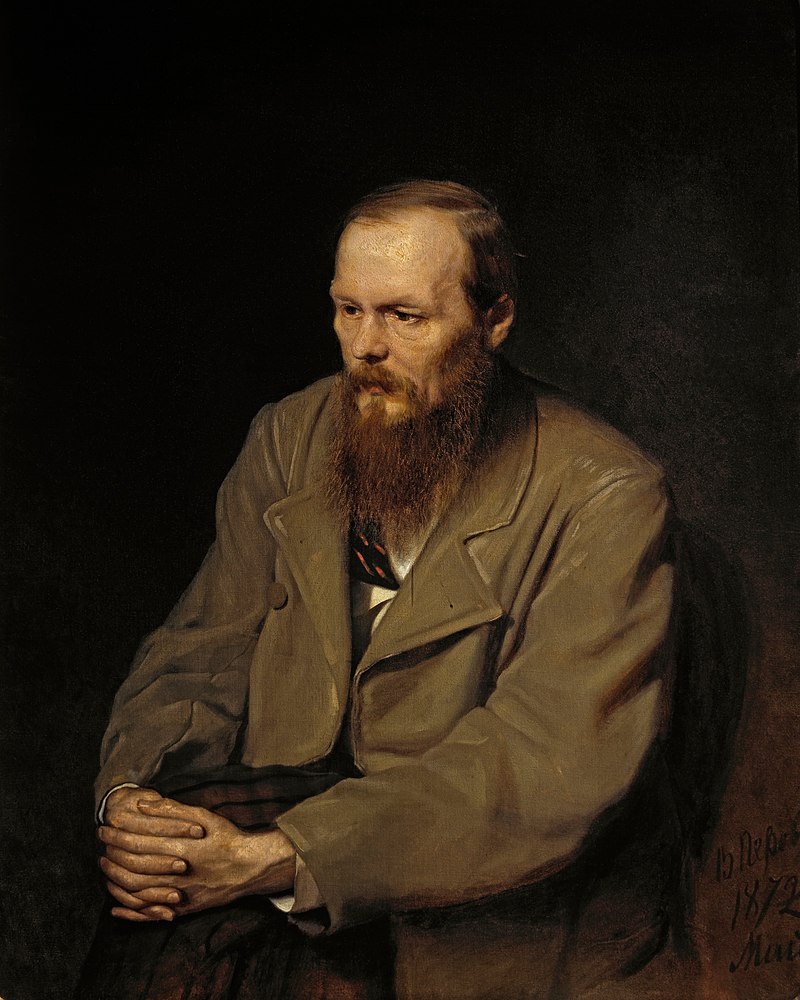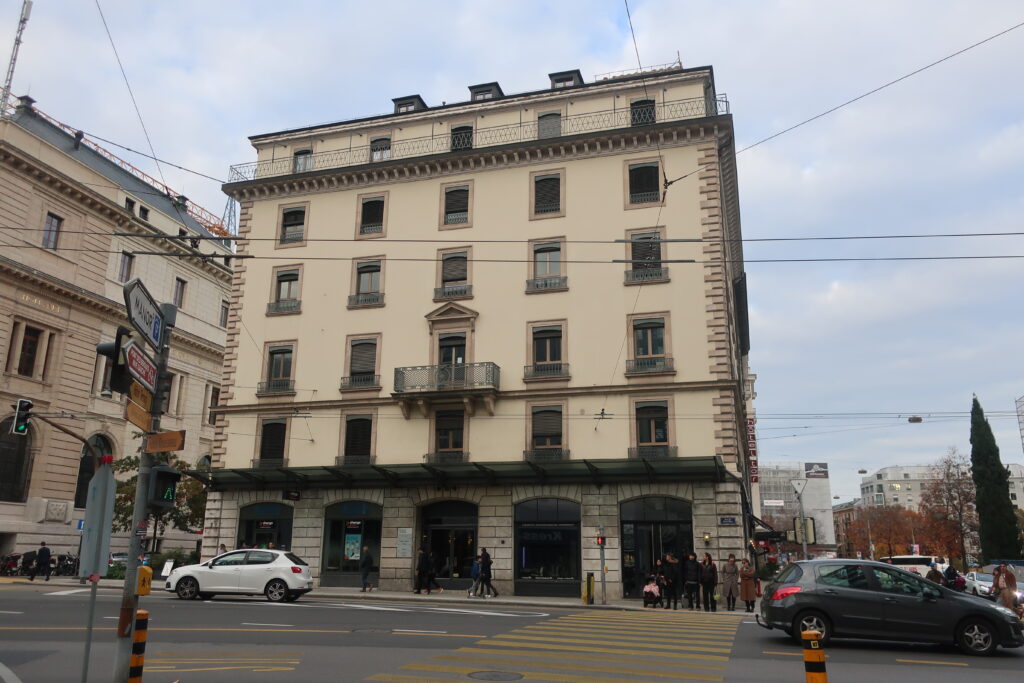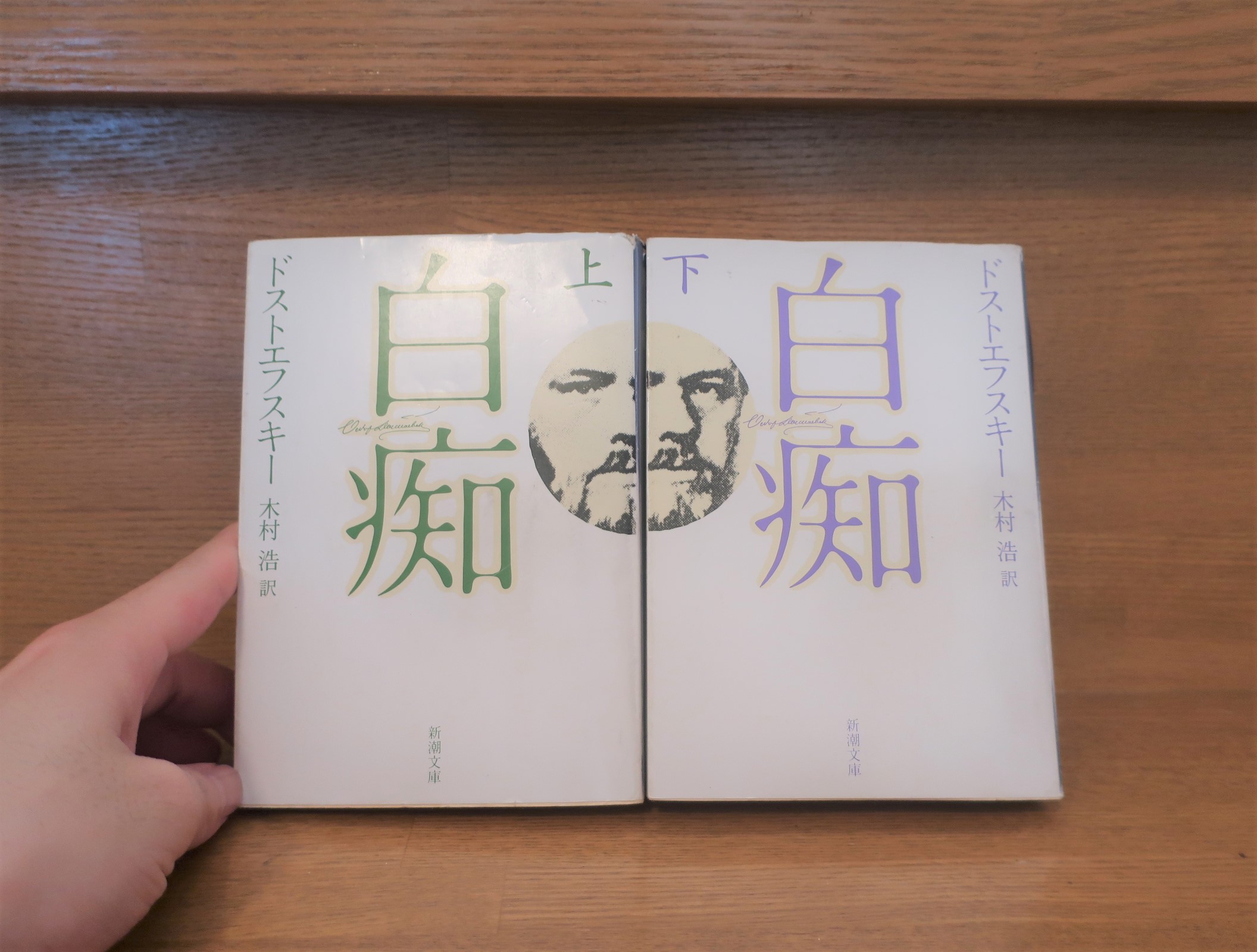The Creation of Christ by Dostoevsky, "The Moron" Summary and Synopsis

The Idiot is a full-length novel published by Dostoevsky in 1868.
I read "Hakuchi" translated by Hiroshi Kimura, published by Shinchosha.
Let's take a quick look at the book.
What is the "unconditionally beautiful human being" that Dostoevsky, the world's greatest writer, wanted to portray?
AmazonProducts Page.
Coming of age in a Swiss sanatorium, Duke Myshkin returns home with no knowledge of the realities of Russia. The Duke's innocence and purity of heart make him beloved by all and stirs their souls, but the people of Russian customs are more confused and disturbed by him. The turmoil deepens when Nastassja, a beautiful woman who has never lost her pride even in the face of disgrace, is discovered.
As mentioned in the synopsis, the protagonist of the film is a young man named Muyshkin who has returned to Russia after recuperating in Switzerland.
Through this myshkin, Dostoevsky sought to create a "perfectly beautiful human being.
The full story of what happened is revealed in the following letter sent to Dostoevsky's niece, Sofia Ivanovich.
...... I have been working day and night for about three weeks now (December 18 of the new calendar year) on another feature film. The intention of this feature film is something that I have been secretly longing to do for a long time, but I have not been able to start it for a long time because it is too difficult a task. I have only started it now because my life has become almost hopeless. The main intention of this feature film is to portray unconditionally beautiful human beings. There is nothing in the world more difficult than that. Especially in our time. All writers, not merely those of our country, but even all European writers, are trying to make thisunconditionallyI am always trying to paint a beautiful human being and always failing. This is an immeasurably large task. Beauty is an ideal, but this ideal has not yet been realized, neither in our country nor in civilized Europe."
Shinchosha Publishing, translation by Hiroshi Kimura, Hakuchi, vol. 2, p. 678
Dostoevsky began writing this work "because life had become almost hopeless," as he himself says in a letter.
He had gone on a gambling binge in Baden-Baden, a German holiday resort, and had fallen nearly penniless.

The events of this time are described in a biography by Dostoevsky's wifeDostoevsky in Recollection."The details are described in the following table.
However, poverty remained a problem even in Geneva, so he asked his publisher to remit the manuscript fees for his works in the form of an advance payment, which is the background behind the creation of "Hakuchi".
Dostoevsky was so driven that he decided to write a work on the theme of "unconditionally beautiful human beings," a story that he had long held close to his heart.
So what kind of person is an "unconditionally beautiful person"? Let's look at the rest of the letter.
There is only one unconditionally beautiful person in the world - Christ. Therefore, the appearance of this infinitely beautiful person is, needless to say, an eternal miracle.
Shinchosha Publishing, translation by Hiroshi Kimura, Hakuchi, vol. 2, p. 678
Of all the beautiful people in Christian literature, Don Quixote is the most perfect. But he is beautiful only because he is also funny. Dickens' Pickwick (infinitely weaker in intent than Don Quixote, but still great) is funny, too, and that is what draws people to it. It expresses pity for the beautiful things that are ridiculed by others and do not know their own value, and so it generates pity within the reader. The secret of humor lies in the technique of evoking this pity. Jean Valjean is a similarly powerful attempt, but it is his horrific misfortune and the injustice of society toward him that arouses our sympathy. My work is completely devoid of such things. For that reason I am terribly afraid that it will be a definite failure. A little detailing probably wouldn't be so bad ......"
Shinchosha Publishing, translation by Hiroshi Kimura, Hakuchi, vol. 2, p. 678
The task of portraying Christ, "the unconditionally beautiful man," is a daunting one. Dostoevsky, from his past works, succeeded in doing so.Cervantes' Don Quixote,Great Britain's literary giantsPickwick, the main character in Dickens' The Pickwick Club, the great French poet.Jean Valjean in Hugo's Les MiserablesI will list the following.
The ridiculousness of Don Quixote and Pickwick and the horrific misfortune of Jean Valjean are what make them beloved by readers as "unconditionally beautiful human beings," Dostoevsky said.
What I mean by this is a difficult question, but I think it means that if you simply try to portray a perfectly nice person, there is a danger that the reader will inevitably perceive him or her as unnatural or snooty.
Perhaps the writer's dilemma is that if he creates a character who is too Christ-like and virtuous, this may cause the reader to feel no sympathy for him or her.
The current work, "The Moron," is a reflection of Dostoevsky's long-held dream to depict Christ,Don Quixote."andThe Pickwick Club., ,Les Miserables.It would be fair to say that the work was considerably influenced by the
impressions
I love "Moron" as well. Personally.Crime and Punishment."I think I might like it better than
What is interesting is that the descriptions of each character's facial expressions and gestures are surprisingly subtle, giving the reader a strange feeling as if something is penetrating into his or her psyche.
There is also a sense of tension in this work, as one never knows what will pop up next. It is a harrowing development in which all the characters have mysteries and situations move suddenly and unexpectedly.
Above all, the charm of the main character, Myshkin, stands out in this work.
Myshkin is a good person anyway. And he has the uncanny ability to see through the depths of others' hearts and make them open up before you know it.
He has such a mysterious charm and is such a beautiful human being that he is called the Marquis de Christ by the characters he works with.
However, he is also an epileptic who is sometimes mocked as a "moron. He is also astonishingly ignorant of the rules and subtleties of Russian society, having spent a long time recovering in the mountains of Switzerland.
In other words, in Russia he is a completely alien person, so much so that he seems to be an inhabitant of the lunar world.
Myshkin himself is troubled by this, but can't help himself.
The good protagonist who does not fit in with the real world. That is Myshkin in "Moron".
The wheels of the story are set in motion by the appearance of Christ Marquis Muyshkin in Russian society.
The drama that unfolds around him is a drama of human love, hatred, mental confusion, and the search for the meaning of life.
Here, the story is complicated and intertwined with everything else.
The chaos and uncertainty of the human mind, the rage to the point where you don't know what you will do next.
And the final act of "Hakuchi" ends with an artistic scene that will remain in the annals of literary history.
The great writer Tolstoy also praised this work and about the main character Myshkin,
It is a diamond. For those who know its value, it is comparable to thousands of diamonds.
Although it aims to portray Christ as "an unconditionally beautiful human being," it is more than enough to enjoy without any knowledge of Christianity. (Of course, it is better to know about it to appreciate it more deeply.)
It is such an outstanding work of fiction and art.
Although it is a work that has not been shown much in the shadows of Crime and Punishment, it is very highly regarded as one of Dostoevsky's masterpieces. It is interesting. I strongly recommend it.
The above is a synopsis of Dostoevsky's "The Moron" - The Creation of Christ - Deep Relationship with Don Quixote and Remise.
*Addition on January 19, 2024
The famous painting "The Dead Christ in the Tomb" from "The Moron."
I visited the Kunstmuseum Basel in 2022 to see this painting.
When Dostoevsky saw this painting with his wife, he was intensely shocked. It was because of that shock that this painting was painted with such great significance in his work "The Idiot. I too was actually horrified by this horrific painting.
The following article also introduces the episode of the writing of "The Idiot". There is much you should learn about Dostoevsky's unexpected side and his wife, Mrs. Anna, who played a major role in the writing of his works.
And finally, I would also like to recommend this article on the places associated with Dostoevsky in Geneva, where he wrote "The Idiot".
This is an addendum to the above.
Next Article.
Click here to read the previous article.
Related Articles





































